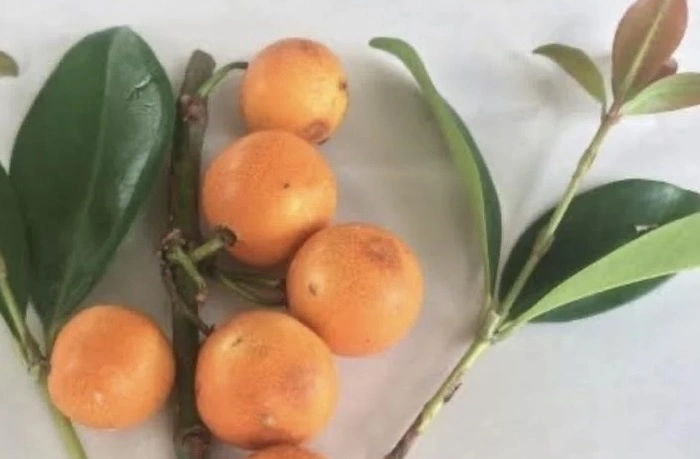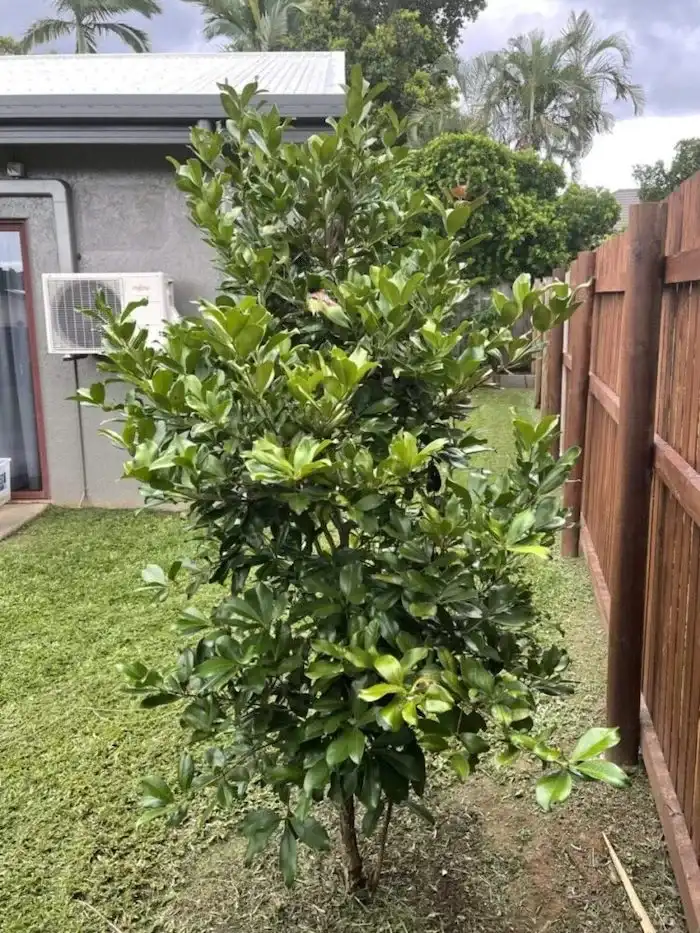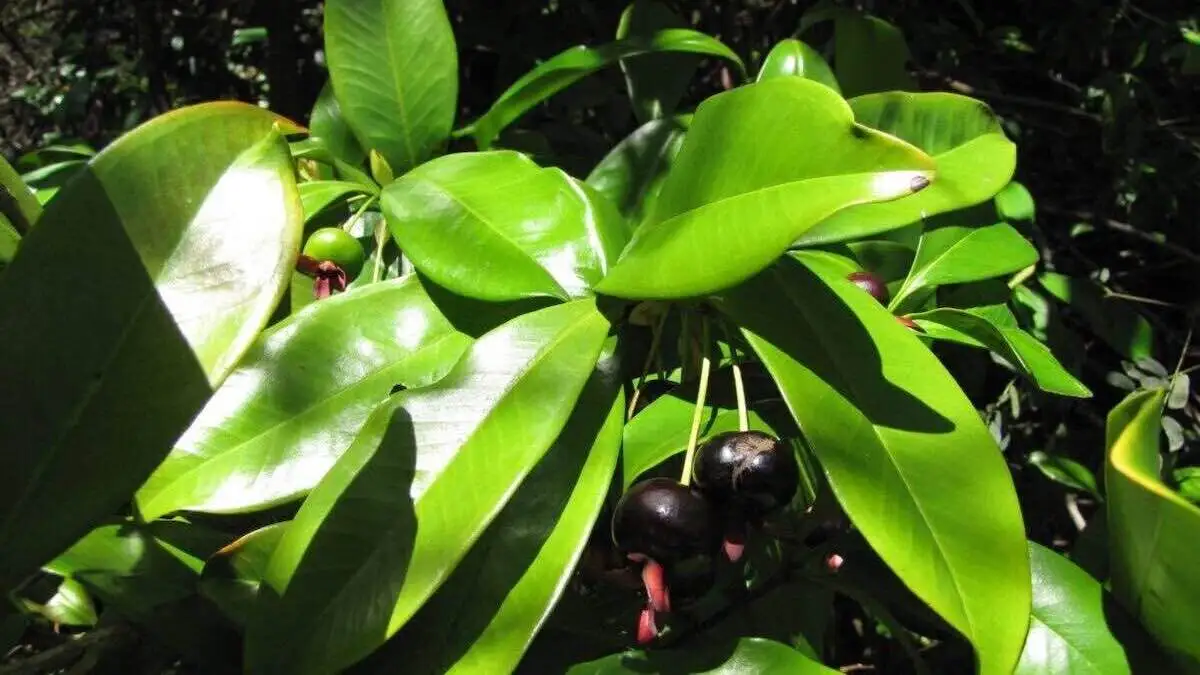Table of contents
Grumichama Fruit Tree
The Grumichama Tree (Eugenia brasiliensis) is a medium sized, attractive tree with thick waxy leaves. It is endemic to southern Brazil, but is now grown widely and is loved by tropical gardeners around the globe.
There are two main varieties of this tree with its grape like fruit, producing either the Purple-Black (Eugenia Dombeyi) or the Yellow (Eugenia Brasiliensis) fruit. A tree may flower several times a year.
Grumichama Orange
The yellow grumichama is also referred to as the grumichama orange. If you like cherries you will absolutely love this tree. This fruit is the tropical equivalent of the cherry. The fruit is delicious eaten fresh. The yellow form is almost identical to the dark form apart from the yellow fruit. It also grows very well in south-east Queensland.

Grumichama Tree Propagation
While grumichama are mostly propagated from seeds, grafting, root cuttings and air layering are also successful. Growing from cuttings is popular and easy to do.
Growing Grumichama from Seed
Time needed: 3 minutes
How to grow grumichama from seed.
- Collect Seeds
When eating grumichama, spit a number of seeds into a container. Soak them in a bowl of water for a day. Stir a few times to separate the seeds from the pulp.
- Rinse seeds
Rinse using a strainer to remove remaining pulp from seeds (you may have to do this a few times). The seeds will remain viable for up to 6 weeks.
- Sow Seeds
Sow 3 or 4 Grumichama seeds in each pot. Space the seeds 3cm (1.2in) apart on the surface of the potting mix. Then press seeds onto the potting mix and cover them with a 25mm (1in) layer of sand.
- Water and Wait
Water in with a misty spray. Then water regularly and leave pot in partial sun.
- Germination
Germination should occur after about a month.
- Thin out
If more than one of your seeds has germinated, thin them out, leaving the strongest.
- Transplant
After another month or two transplant in to a full sun location. A good time to do this is after the first downpour of the wet season.
- Wait some more
The tree is slow growing and may take 5-6 years from seed to when it starts fruiting.
Grumichama Tree Height
The tree can grow up to 15m (49ft) in height. However, pruning can make your tree fit nicely in a suburban garden. Indeed it is sometimes pruned into a neat hedge.
Dwarf Grumichama Tree
The Dwarf Grumichama tree is known for its compact size, making it suitable for small gardens or even containers. It typically grows to about 6-10 feet tall, although some varieties may grow slightly taller under optimal conditions.
Grumichama Tree Growing Conditions
The grumichama tree is fine for a suburban garden. It grows well in temperatures found in tropical and subtropical coastal regions.
This tree prefers deep sand or loam type soil. However, it will survive in shallow sandy soils if you give it enough water. The grumichama loves to be located in full sun if possible.
Grumichama Tree Care
Grumichama tree care includes feeding your tree. In good soil, fertilise twice each year. Once pre-flowering and once as harvesting draws to a conclusion.
Pre-harvest we apply calcium and boron to promote flowering and pollination. Kelp also contains compounds to enhance flowering and fruit set.
During harvest/post harvest, we apply a fertiliser rich in nitrogen, phosphorus, potassium and calcium.
Flowering normally takes place at the end of the dry season (spring), with the tree fruiting into the wet (or summer).
Watering
This tree has a fairly shallow root system. Hence it will require watering regularly during the ‘dry season’.
In addition, seedlings and fruiting trees need a lot of rain or extra water. This is for growth in the case of the seeding, and to prevent fruit drop in the case of mature fruiting trees.
Pests and Diseases
This tree is resistant to pests. However, when the tree does fruit, you may have some competition from the nearby bird population.
Grumichama tree care in pots
Grumichama can easily be grown in a pot. Indeed this is most beneficial if you live in areas where it might get too cold. It is also useful to grow in a pot if you don’t have the healthiest of soils or enough room in your garden.

Eating the Fruit
Good grumichama tree care leads to …. fruit! The fruit is often eaten straight off the tree. In addition the fruit can be used for making jelly and jams.
Grumichama Fruit Taste
The pulp of the fruit is juicy and tastes much like a true subacid or sweet cherry except for a touch of aromatic resin.
Grumichama Fruit Benefits
There are a number of health benefits to consuming the grumichama fruit.
Weight Loss
The fruit is a healthy snack that can help with weight loss. It is low in calories and carbohydrate but packed with vitamins, minerals and protein. A good weight loss combination.
Fibre
The fruit is very high in fibre. Consequently, this fibre helps to increase the absorption of water in the intestine facilitating the formation and elimination of stools.
Immune System
Studies have shown this fruit to offer considerable support to your immune system. Hence it aids the body’s capacity to fight off a number of diseases.
Antioxidants
Grumichama contains antioxidants, which are known to combat free radicals, helping to avoid the deterioration of cells.
Prebiotics
Finally, research has shown the Grumichama peel is a nutritious source of bioactive compounds with prebiotic effects. So in ordinary language, the peel is great for your gut health and can help to prevent disease
Where to buy Grumichama Tree
Consider visiting a local plant nursery. You will be surprised with what they have to offer. In the tropics, there is a good chance they will have a grumichama tree.
Grumichama Tree for Sale Australia
This plant can be purchased from Bunnings, either in a small pot from the nursery section or in seed form. However, why not consider supporting a local nursery? They often have what you need and a lot more besides. Also, often local nurseries sell products suited to the local climate.
Other Tropical Fruits
- Black Sapote
- Custard Apple
- Dragon Fruit
- Guava Tree
- Jaboticaba
- Kumquat Tree
- Lemonade Tree
- Mamey Sapote
- Mulberries
- Natal Plum
- Passion Fruit
- Paw Paw Tree
- Rambutan
- Star Apple
- Watermelon


Comments
8 responses to “Grumichama Tree Care Guide”
[…] Grumichama […]
[…] Grumichama […]
[…] Grumichama […]
[…] Grumichama […]
[…] Grumichama […]
[…] Grumichama […]
[…] Grumichama […]
[…] Grumichama […]